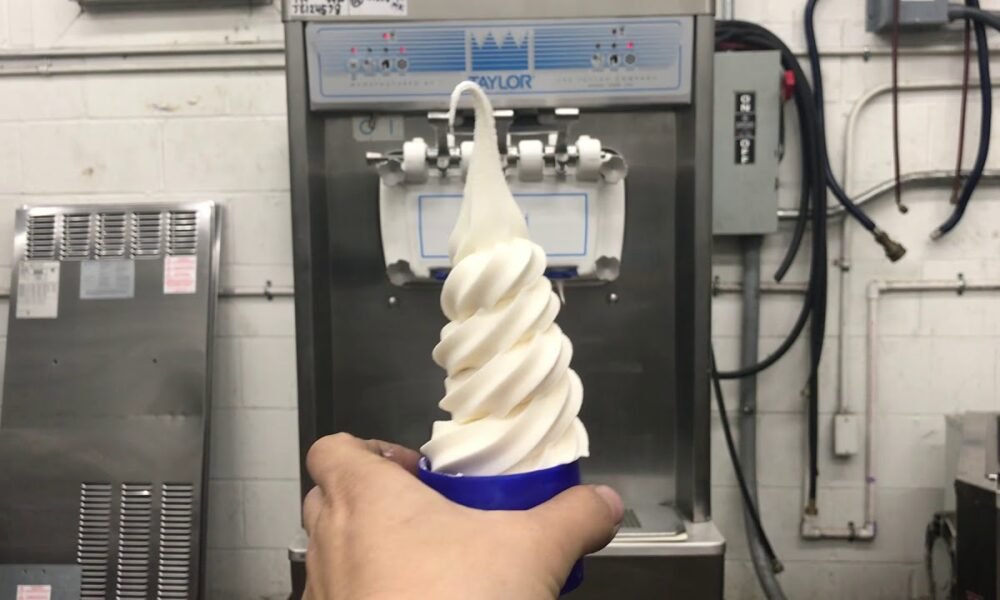Ice cream, a delightful frozen charm loved by people of all ages, has the power to turn a gloomy day into a joyful one. However, when your trusty ice cream machine starts to show signs of trouble, it can be quite disheartening. In such moments, understanding how to troubleshoot and repair your ice cream machine can be a valuable skill. Repairing a soft-serve ice cream machine involves checking for motor issues, cleaning or replacing worn parts, calibrating settings, and, if needed, seeking professional assistance for technical problems. Here are some essential tips to help you diagnose and potentially fix common issues that can plague these machines. From basic cleaning and maintenance to identifying faulty components, these tips will empower you to enjoy your favourite frozen desserts with a smoothly operating ice cream machine.
Start with the best Equipment for your Ice Cream Machine:
When it comes to repairing an ice cream machine, beginning with quality equipment is pivotal. The reliability and durability of your tools greatly impact the repair process. Investing in high-quality tools tailored for Soft Serve Ice Cream Machine Repair ensures precision and efficiency, making the task more manageable. Superior equipment, such as specialised wrenches, multimeters, or manufacturer-specific components, often simplifies the troubleshooting and repair process, reducing the risk of errors. These tools not only enhance accuracy but also ensure safety during the repair. Starting with the best equipment sets a strong foundation for successful ice cream machine maintenance and repair endeavours.

Regular Cleaning:
Regular cleaning is essential for maintaining an ice cream machine’s functionality. Residue, dairy fats, and sugar can build up over time, leading to clogging or affecting the freezing process. To prevent this, it’s crucial to clean the machine after each use. Disassemble removable parts and clean them thoroughly with warm, soapy water, ensuring no residues remain. Wipe the machine’s exterior and sanitise all surfaces that come in contact with the ice cream. Additionally, follow the manufacturer’s cleaning guidelines to maintain hygiene and prevent any potential contamination. Regular cleaning not only ensures the machine’s longevity but also guarantees the production of high-quality, safe ice cream.
Clean and Sanitize Ice Cream Machine:
Maintaining cleanliness and ensuring proper sanitisation are vital for the optimal functioning and hygiene of an ice cream machine. Regular cleaning eliminates residue buildup, preventing flavour contamination and bacterial growth. Begin by disassembling the removable parts and washing them thoroughly using warm, soapy water. Sanitise these components with a food-safe sanitiser, eliminating any remaining bacteria. For the machine’s exterior, use a damp cloth to remove spills and stains, avoiding water infiltration into the internal machinery. Regular cleaning not only enhances the machine’s longevity but also guarantees the production of safe and hygienic ice cream for consumption.
Lubricate the Parts:
Lubricating your ice cream machine is an essential part of maintenance to ensure smooth and efficient operation. Proper lubrication reduces friction among moving parts, such as gears and bearings, preventing premature wear and tear. Using a food-grade lubricant suitable for your machine, apply a thin layer to the necessary components as recommended in the manufacturer’s manual. Regular lubrication not only raises the lifespan of the machine but also aids in maintaining consistent performance. Ensure that excess lubricant is wiped away to prevent contamination of the ice cream. Always follow the policies provided by the manufacturer to maintain optimal hygiene and operational standards.
Stock of important parts:
Maintaining a stock of crucial replacement parts is indispensable for anyone operating or repairing ice cream machines. Essential components like freezer bowls, paddles, gaskets, seals, and motors are key to ensuring seamless operation. Additionally, having spare parts such as compressors, condensers, and electrical elements can preemptively address sudden malfunctions. Stocking these parts helps minimise downtime and enables prompt repairs, which is essential for businesses relying on continuous machine functionality. Regularly used items like o-rings, cleaning brushes, and lubricants should also be part of this inventory. Prioritising these replacement parts ensures quick, efficient repairs, keeping the ice cream production process uninterrupted and maintaining customer satisfaction.
Seek Energy Source:
One crucial aspect in troubleshooting ice cream machine issues is verifying the energy source. Ensure the machine is properly connected to a steady power supply. Check for any blown fuses, tripped circuit breakers, or faulty power outlets. Sometimes, fluctuations in electricity or an inadequate power source can impact the machine’s performance. Confirm that the voltage requirements match the outlet and that the machine receives consistent power. A stable energy supply is fundamental for the machine’s cooling or churning functions. Resolving power-related problems often resolves operational issues, allowing the machine to function optimally and produce delicious ice cream.
Remember that fixing an ice cream machine may require a good understanding of the appliance and its components. If you’re unsure or if the problem is beyond your expertise, it’s always wise to seek experienced repair services to avoid further damage or safety risks.




